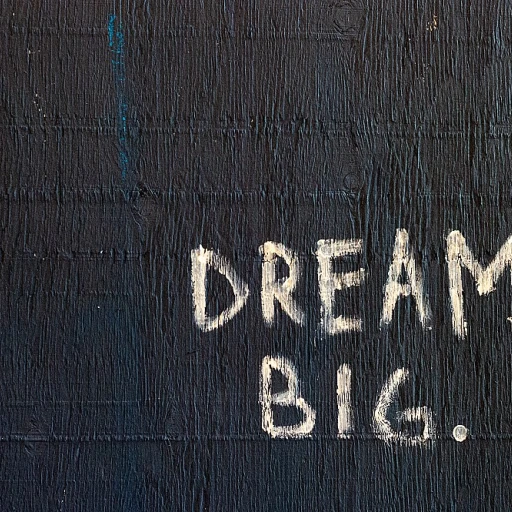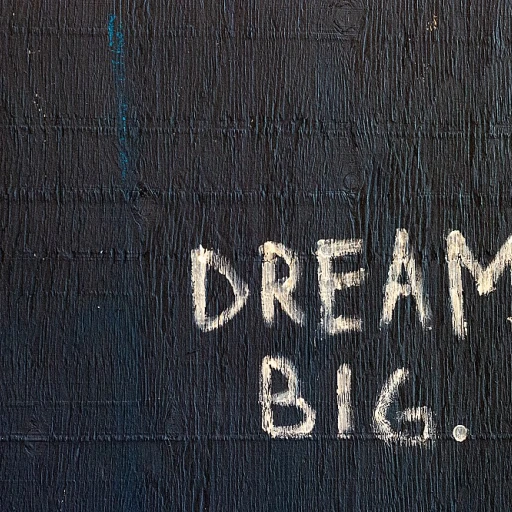Understanding the Importance of Diversity in Recruitment
The Crucial Role of Diversity in Modern Recruitment
In today's rapidly evolving workplace, diversity is not just a buzzword but a vital component of successful recruitment strategies. Embracing a diverse workforce isn't merely about meeting quotas or ticking boxes; it forms the foundation for a more inclusive and innovative work environment. Understanding why diversity matters is the first step in crafting a truly effective hiring process that stands the test of time.
Research consistently shows that organizations with diverse teams perform better, are more innovative, and cultivate a competitive edge in the marketplace. A multitude of perspectives can drive more creative solutions to complex problems, which is something homogeneous teams might struggle to achieve. Beyond performance, a diverse environment attracts talent at various levels, making it easier for companies to source and retain top candidates.
Addressing Diversity Beyond the Surface
Diversity extends beyond simply having a mix of ethnicities, genders, and backgrounds. It's about fostering an environment where all voices are heard, respected, and valued. This involves reconsidering how we source candidates, how roles are defined, and even the language used in job descriptions. Attention must be paid to identifying and overcoming unconscious biases, which can impede the recruitment of a truly diverse talent pool. This topic will be explored in further detail to ensure that recruiters have the tools they need to combat biases effectively.
The Path to an Inclusive Workplace
Building an inclusive strategy requires a proactive approach towards understanding and embracing diversity. By engaging with diverse communities and platforms, recruiters can widen their search and access a broader range of potential candidates. This approach not only benefits the company culture but also positively impacts the brand's reputation. Success in this area means creating opportunities for all candidates to shine, regardless of their background.
It’s also essential to periodically conduct a diversity sourcing audit to evaluate the current state of recruitment strategies and ensure they align with the overarching diversity goals. Setting clear and measurable goals for diversity sourcing will guide the recruitment team in achieving a balanced workforce representation. This multistep journey is pivotal for mastering the art of finding top talent, as outlined in our exploration of recruitment strategies here:
mastering the art of finding top talent. By weaving inclusivity into every facet of recruitment, companies can truly champion diversity in today’s hiring landscape.
Identifying and Overcoming Unconscious Bias
Recognizing Hidden Biases
Unconscious bias is a subtle yet powerful influence that can affect recruitment decisions, often without us realizing it. This bias can manifest in various forms, from favoring candidates with similar backgrounds to overlooking those from underrepresented groups. To foster a truly inclusive hiring process, it's crucial to identify and address these hidden biases.
One effective method is through training and workshops that raise awareness among hiring teams. By educating recruiters about the different types of unconscious biases and their impact, organizations can create a more equitable recruitment environment. Additionally, incorporating structured interviews and standardized evaluation criteria can help mitigate bias by ensuring that all candidates are assessed on a level playing field.
Implementing Bias-Reduction Techniques
Another strategy is to implement blind recruitment processes, where identifiable information such as names, gender, and educational background is removed from applications. This approach encourages evaluators to focus solely on the skills and qualifications of candidates, promoting a fairer selection process.
Moreover, leveraging technology and data analytics can provide insights into potential biases in the recruitment process. By analyzing patterns and trends, organizations can pinpoint areas where bias may be influencing decisions and take corrective actions. For more insights on overcoming biases and enhancing your recruitment strategy, explore mastering the art of finding top talent.
Building a Diverse Talent Pool
{"result":"
Expanding the Candidate Network
\nTo achieve a truly diverse talent pool, it is imperative to reach beyond the usual sources and tap into a broader range of candidates. Start by exploring diverse job boards and niche communities specifically aimed at underrepresented groups. These platforms provide access to a rich variety of talent that might not be visible through traditional recruiting methods. Additionally, engaging with organizations and professional groups that support diversity can yield valuable connections and enhance your outreach efforts.\n\n
Strengthening Brand Image for Inclusivity
\nAnother crucial aspect of building a diverse talent pool is ensuring your company’s brand reflects a commitment to inclusivity. Showcase your organization's diversity initiatives and values on your career page and social media channels. Highlighting stories of employees from diverse backgrounds and celebrating cultural events can make your workplace more appealing to diverse applicants. In an era where candidates are as selective as employers, presenting a genuine commitment to diversity can be a powerful tool in attracting diverse talent.\n\n
Maximizing Referral Programs for Diversity
\nEmployee referral programs are a vital resource for sourcing talent. However, to avoid perpetuating homogeneity, it’s essential to structure these programs to incentivize diverse referrals. Encourage team members to expand their professional networks and refer candidates from various backgrounds. Offering incentives specifically for diverse referrals can open pathways to talents who might otherwise remain untapped.\n\nBy expanding your candidate network, branding for inclusivity, and maximizing referral programs, you set the stage for effective diversity sourcing strategies. These steps not only enrich the talent pool but also pave the way for a more inclusive and innovative work environment. For more insights into identifying and overcoming recruiting biases, you might want to explore our article on
unlocking the secrets to effective candidate sourcing."}
Crafting an Inclusive Recruitment Strategy
Developing a Recruitment Process that Welcomes All
A crucial component in crafting an inclusive recruitment strategy is to evaluate every aspect of your hiring process through the lens of diversity and inclusion. This involves examining the language and imagery used in job postings and considering how they might inadvertently deter diverse candidates from applying. Opt for inclusive language that encourages applications from a broad spectrum of candidates, avoiding jargon or terms that may alienate certain groups.
Another effective approach is to train hiring managers and recruitment teams on best practices for interviewing that promote fairness and equality. This training can equip them with the necessary skills to enhance their awareness and sensitivity towards diverse candidates and to help curtail any biases during the interview process. Consistency in interview formats and questions is also key—ensure that each candidate is provided with the same opportunities to showcase their skills and potential.
Embracing technology and data analytics can also support your efforts in crafting an inclusive recruitment strategy. By leveraging AI tools designed to assist with bias detection in resumes and applications, companies can further promote diversity within their recruitment process. However, it's essential to continuously evaluate these tools to ensure they themselves do not perpetuate bias.
Moreover, implement a feedback mechanism where candidates can share their experiences throughout the hiring process. This not only helps to identify and address any issues but also demonstrates a commitment to continuous improvement and genuine inclusivity in candidates' experiences.
Engaging stakeholders across the organization to champion and support diversity initiatives is imperative. Encourage collaboration with Employee Resource Groups (ERGs) to provide insights and ideas on making the recruitment process more inclusive. Their unique perspectives can be invaluable in shaping strategies that resonate with diverse audiences.
By focusing on these aspects, you'll be building a recruitment culture that is genuinely inclusive and appealing to a broad spectrum of talents, ultimately contributing to a diverse and dynamic workforce.
Conducting a Diversity Sourcing Audit
Examining Your Current Recruitment Landscape
Before diving into the mechanics of a diversity sourcing audit, it's crucial to thoroughly examine your existing recruitment landscape. Understanding the current state of diversity within your organization helps set a baseline for improvement. Consider asking yourself questions such as: What does your current workforce look like in terms of diversity? Are there particular areas or departments that lack representation?
Data Collection and Analysis
Once you have identified the current state of diversity, the next step is to collect and analyze relevant data. A comprehensive analysis involves gathering HR data on recruitment metrics, retention rates, and promotion statistics, segmented by demographic factors. This serves as a diagnostic tool, illuminating areas that require immediate attention.
Evaluating Recruitment Channels
Evaluate your existing recruitment channels and investigate whether they contribute or hinder your diversity goals. Analyzing the efficacy of platforms, job boards, or agencies in reaching diverse candidates can provide insightful data. Consider if alternative channels could lead to a more inclusive candidate pool.
Employee Feedback and Insights
Incorporating feedback from current employees can significantly enhance your audit. They can provide insights into the company's culture, unconscious biases that may be present, and suggest ways to improve inclusivity. Tools such as surveys and interviews can help gather this valuable data.
Reviewing Job Descriptions and Criteria
Reviewing your job descriptions and criteria is another vital component of conducting a diversity sourcing audit. Language plays a pivotal role in attracting a diverse applicant pool. Ensure that job descriptions are free from biased language and do not inadvertently deter potential candidates from applying.
Conducting a thorough diversity sourcing audit is a strategic step toward understanding the existing pitfalls in your recruitment process. It enables organizations to identify shortcomings and areas for improvement, setting the stage for an inclusive and effective recruitment strategy.
Setting and Achieving Diversity Sourcing Goals
Establishing Tangible Diversity Metrics
Creating a successful diversity sourcing strategy requires setting clear, tangible goals. These goals should be specific, measurable, attainable, relevant, and time-bound (SMART). First, identify the specific areas within your organization that need improvement. Do you need a more gender-balanced team? Or perhaps you're seeking more cultural diversity?
Once you have a clear understanding of your diversity needs, define goals that align with these requirements. For example, aim to increase the percentage of employees from underrepresented groups by a specific percentage within a certain timeframe.
Tracking and Analyzing Progress
Monitoring your progress towards these diversity goals is crucial. Regular audits of your recruitment strategies, as discussed in our previous sections, can help identify areas of improvement. Consider using metrics such as candidate sourcing channels’ effectiveness, interview-to-hire ratios, or diversity representation in applicant pools to track success.
Additionally, employ data analytics tools to gain insight into how your diversity sourcing efforts are impacting your hiring outcomes. Continuously evaluate and adjust your strategies based on these analytics to ensure you remain on track to meet your goals.
Fostering Accountability and Commitment
A commitment to diversity sourcing should be embedded within the organizational culture. It’s essential that everyone, especially leadership, is on board with these goals. Foster accountability by assigning roles within the team to champion diversity efforts, ensuring that there is a clear line of responsibility.
Moreover, communicate progress regularly within the organization. Sharing successes and highlighting areas for improvement can help maintain momentum and collective commitment to achieving diversity goals.
Celebrating Achievements and Learning from Setbacks
Recognizing and celebrating milestones as you progress towards your diversity goals can help bolster morale and reinforce the organization’s commitment to diversity. Acknowledge efforts and successes internally and externally to position the organization as a diversity-forward employer.
In contrast, setbacks are inevitable but valuable. Use these as learning opportunities to reassess and refine your strategies. Continuous learning and adaptation are key to sustaining a robust diversity sourcing strategy over time.












